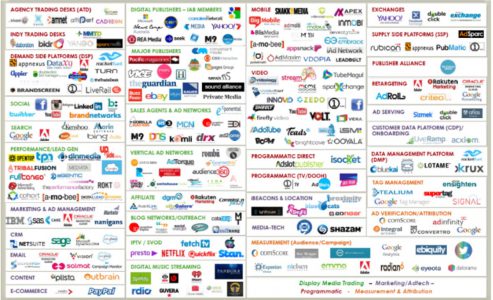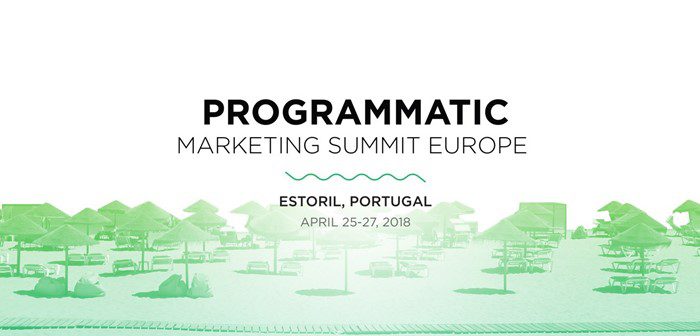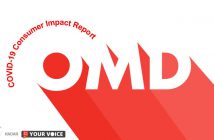Round the world and home again…
Olá!
Hopefully it won’t just be the die-hard Roald Dahl fans who will note I’ve punctuated this blog piece on the Digiday Programmatic Marketing Summit Europe in Estoril, Portugal with lyrics from the psychedelic ‘Wondrous Boat Ride’ scene from Willy Wonka and the Chocolate Factory (1971).
The relevance of the scene has nothing to do with the summit venue (held at the elegant Palacio Estoril Hotel) and everything to do with the palpable sense of trepidation felt by all attendees in light of the tremendous change facing the digital marketing landscape on May 25th, 2018.
Held one month before the biggest change to data protection in more than 20 years (remember the Data Protection Act – 1998?), the summit attracted ambassadors from brands, agencies, media and ad tech vendors debating all the usual suspects; in-housing, transparency, cost, data, automation, consolidation, supply-chain, people-based measurement, content verification and visibility reporting.
But one theme transcended these discursive topics over the course of the conference: speed.
Is a hurricane a–blowing?
In my time at OMD, I have been fortunate enough to have front-row seats to the programmatic revolution. The automation of the technology has brought so many efficiencies but chief amongst these is the sheer speed with which advertisers can now plan, optimise, trade and reconcile campaigns across the web vs. a classical buy.
However, what has become clear is that the core challenge of such a dramatically faster and more technically complex method of digital ad execution appears to be keeping pace operationally. A recurring uneasiness from all attendees was that programmatic ad tech is also evolving so quickly it can feel hard to keep up both as an organisation and as an individual.
For the rowers keep on rowing…
While we’ve certainly seen consolidation in all areas of our industry in recent years, one does not have to wait long at any conference to see the infamous graphic mapping the logos of the hundreds (if not thousands) of still-active players in the programmatic and ad tech ecosystem.

At the summit it was Zuzanna Gierlinska (Head of Programmatic, Spotify, EMEA) who unleashed the inevitable slide on the opening day in an otherwise fresh and imaginative examination of personalisation in digital marketing. The painfully cluttered graphic encapsulates the technical labyrinth of our industry and also, for me, helps underline the importance (more than ever!) to attend our industry events to help navigate the complexities face-to-face with our peers.
I was lucky enough to do so in Estoril and I invite you to stop rowing for a moment and find the time, resource and attention to digest my Five Point summary below.
Measurement
The reality is the walled gardens have the best deterministic data and tools for reporting. The rest of the web is still striving to establish a scalable, addressable protocol to target and report accurately on cross-site and cross-device campaign reach and frequency. The debate at the summit centred on the limitations of cookies and the enduring desire for people-based targeting and the ability to talk to real individuals in relevant contexts. Some of the most exciting solutions currently being developed for the wider web (Sonobi, Atlas, various other DSP-enabled consumer and device graph solutions etc.) still have some way to go but it seems inevitable we will continue to reduce our reliance on low-fidelity, cookie-based tracking in the coming years (and GDPR will likely accelerate this trend!).
Scorecards
The humble CPM and CTR have of course been enhanced in the programmatic revolution and a host of new cost and quality acronyms now await any digital planner or buyer; but which matter?
Duracell’s Jon Ones (Head of Digital, International) gave an excellent account of a new media measurement acronym I’d yet to encounter: VARIO (Viewable/Human, Attention, Reach and Frequency, Investment Mindset, Optimisation). In a compelling presentation, Jon presented his VARIO scorecard method calculating the true cost and quality of digital campaigns vs. the more traditional HAVOC (Human, Audible, Viewable On-Completion) model. The “Investment Mindset” element spoke to me in particular as a media buyer and helpfully encourages careful commercial consideration of the pros and cons of the various programmatic routes to market.
Transparency
No surprises here generally; the open marketplace programmatic supply chain is convoluted and pricing is extremely problematic to benchmark. However, I did enjoy Matt O’Neill (European General Manager of The Media Trust) describing his organisation’s mission to turn the programmatic ecosystem into a catalogued and verified “well-lit area”. He peppered a superb talk with several other vivid analogies including likening a purely reactive approach to brand safety to Whack-a-Mole with a description of the subsequent knock-on problems as “popping up like wild mushrooms in the forest after heavy rain”. I also discovered that (for advertisers, agencies and brands alike) there is still no programmatic mock-up solution quite like a good, old-fashioned in-situ screengrab! Ultimately, delegates agreed transparency in programmatic is required and certainly improving.
Duopoly
Always one of the liveliest topics from my own experience and the Digiday summit did not disappoint. I found myself in particularly strong agreement with one delegate’s astute assessment that almost all industries have players with hegemonic positions and there is no reason why our industry should feel so perturbed about the dominance of Facebook and Google.
I found myself challenging the very application of the term ‘duopoly’ given that Google’s ad revenue both as a volume and as a % share of all ad revenue spent by marketers is approximately double that of Facebook’s. I also argued that Google’s revenue which, crucially, is heavily diversified (Search, DBM, DCM, ADX etc.) could also support the argument that we are facing a monopoly in Google alone. This is not to denigrate Facebook’s scale or usage, merely a challenging perspective on the belief that Facebook and Google might somehow be neatly splitting the estimated $60b per annum they receive together in total ad spend.
Partnerships
Direct partnerships, whether powered programmatically or not, received a healthy amount of support from delegates primarily for the additional creative solutions enabled and the ability to engage with users beyond banners.
Managed-service programmatic solutions were also offered by all adtech vendors at the summit, in clear recognition of those very same operational difficulties of keeping pace with (and training staff on!) new solutions and platforms. A common practice amongst attendees was to trial new programmatic tech platforms and solutions and, if successful, then look to move to a self-serve model. This enables advertisers and agencies the flexibility so desperately needed to test the multitude of products available.
…and they’re certainly not showing any signs that they are slowing
For all the exciting debates, products and programmatic revelations at the summit, above all, I came away inspired to continue to help OMD adapt operationally as an organisation to the pace of technological change in our industry. I believe the pace of change in our industry will only increase and it’s our job as marketers to keep up. While it’s simply not practical to meet every tech partner or embrace every new product, we must also fight the temptation to simply continue executing in a tried-and-trusted manner. Similarly, while we must all devote time and effort to learn and develop as programmatic advocates, we must equally fight to retain the core marketing mindset that transcend any piece of shiny, new adtech; how do we earn a share of our audience’s lives and how do we measure that impact against a real-life business challenge?




